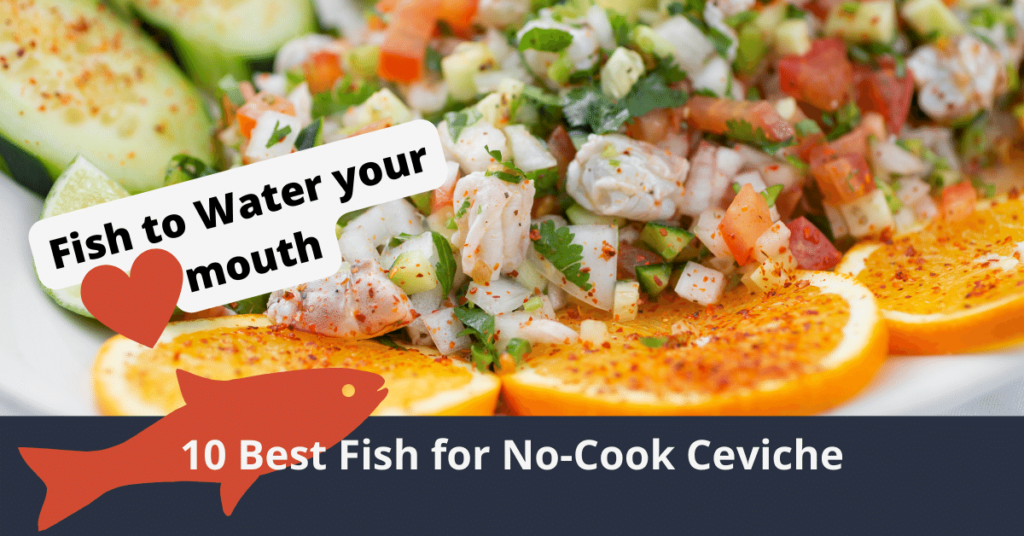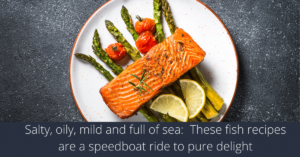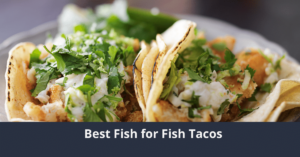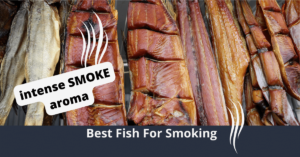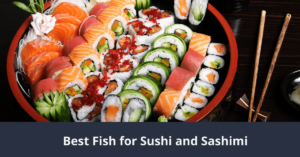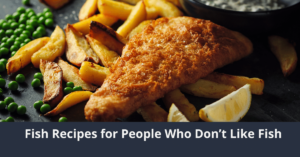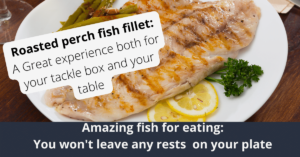While many people may avoid ceviche because it contains raw seafood, it is actually safe to eat and extremely delicious if you choose the right fish to make it! Let’s explore what it takes to make a delicious bowl of ceviche and what are the the 10 best fish for no-cook ceviche.
Everything you will learn here
Top 10 Best Fish for No-Cook Ceviche
Ceviche is an easy Latin American dish to whip up. While there are numerous variations, the most common type includes only a few ingredients: fresh fish, citrus juice, red onion, and cilantro to taste.
Interestingly enough, the citrus juice used to prepare ceviche actually “cooks” the fish. It doesn’t use heat, of course, but the citrus firms the fish from the outside to the inside. This chemical process is called “denaturation,” and you can watch as the fish turns opaque as it marinates in the juice.
Chefs recommend a firm, lean fish for the base of your ceviche. Adding onions, cilantro, cucumbers, tomatoes, and avocado can suit this recipe to your tastes. You can even enhance the recipe with different seafood for more layers of flavor and texture.
Here is our list of the best fish—and few other seafood options—that will work great the next time you want to mix up some tangy ceviche. These options will work well with the citrus flavors and are safe choices for raw consumption.
1. Grouper
Grouper is a lean, white fish that has a great mild taste for ceviche. After thawing the frozen grouper in cold water, cut it into small, bite-sized pieces. Smaller pieces will only need to marinate in citrus juice for thirty minutes, whereas larger pieces might need an hour.
This is a perfect choice for ceviche because it is less prone to parasites, so there’s almost no risk of getting sick from it. Toss your marinated grouper with onions, tomatoes, and cilantro according to your taste, and enjoy as a side dish with tortilla chips.
2. Striped Bass
Striped bass has a delicious buttery taste on its own, so a citrus brine complements the smooth flavor perfectly. This fish has flaky flesh, so cutting it while it’s chilled makes it easier to handle. Use a sharp knife and cut at an angle to keep the meat from falling apart.
Lemon and lime juice are most popular for marinades because the acidity will quickly “cook” your fish. You can marinate your bass for up to two hours, but keep an eye on the flesh. If it stays in the citrus juice for more than two hours, it might start to pickle.
3. Fluke
Fluke, also called flounder, is a lean fish that has a mild and sweet flavor. Fluke is a popular choice for sushi and sashimi because of its smooth texture, so understandably, it’s also ideal to use for ceviche.
The flesh is firm, so it’s easy to handle when it comes to cubing the fish for ceviche. When you’re considering the size of the cubes you cut, keep in mind that the purpose is to give the fish more surface area to be “cooked” by the citrus juice.
4. Sole
Sole has a mild, sweet flavor, and the texture of the fish is more like meat. Lemon juice is a perfect marinade for this fish because the tastes pair well. You can also elevate the flavor by adding a dash of salt and pepper when you coat it with citrus juice.
Since the sole is a more substantial fish, you can also add avocado to the ceviche when you’re ready to serve it. The creaminess of the avocado accentuates the texture of the sole.
Especially paired with the avocado, sole ceviche is a healthy dish that can be eaten as a complete meal or as a side dish.
5. Rockfish
Rockfish is a lean fish that has a slightly nutty taste. Though lime and lemon juices denature fish more quickly because of their high acidity, the flavor of orange juice pairs nicely with rockfish. If you don’t want to take a long time to let the rockfish properly cook in orange juice, cut it into smaller cubes so it will denature quickly.
You can keep your rockfish ceviche in the refrigerator for two days. Before sealing it in an airtight container, drain the excess citrus juice so it won’t continue cooking the fish in the fridge.
6. Halibut
Halibut has a sweet, mild taste that pairs well with lemon juice, so it’s ideal to use that to denature the fish. Halibut is a denser fish than some others on this list, so it might take up to an hour to completely “cook” through in citrus juice.
If you want a sashimi-like texture to your ceviche, you only need to soak your fish cubes for about fifteen minutes. This makes the exterior firm and opaque while leaving the inside tender.
7. Snapper
Snapper is a firm fish that keeps its shape, so it will stay cubed when you dice it. Some fish have flaky flesh, which can still taste amazing in ceviche but doesn’t look as uniform as firm fish. Ceviche made from snapper can be eaten as a low-calorie meal on its own, ideal for anyone following a keto diet.
Red snapper has flesh with a slightly pink tint, so you can watch the citrus juice work its magic and turn the flesh to an opaque white. It’s worth noting that the flesh that stays moist even if you denature it until it is firm all the way through.
8. Salmon
While most fish on this list have been lean, white fish, salmon is more decadent, with a rich, oily flavor. Salmon has a meaty taste that pairs wonderfully with a lime citrus marinade.
Salmon is high in omega-3 fatty acids, making it an ideal protein to use in ceviche. Using salmon cubes makes this recipe especially hearty, so it’s substantial enough to use as a taco filling.
9. Tuna
The label “tuna” covers several different types of fish. Even though they fall under the same category, not all tuna is ideal for ceviche.
Albacore tuna is a white tuna that has a light flavor, while yellowfin tuna has a slightly fishy taste in comparison. Both are good options to cube and denature for a delicious ceviche recipe because they are easy to overcook and taste best somewhat raw.
Various types of tuna have different mercury levels, so make sure you’re eating the right portions for each type. Using heat to cook tuna with higher mercury levels is the best way to prevent mercury poisoning, so if you have bluefin or albacore, you shouldn’t use it in ceviche.
10. Octopus
All of the fish to this point have been pretty basic, things you’ll have no problem finding at the seafood counter. Octopus, however, is usually a special order item. It often comes whole, raw, and frozen, which can be a lot to tackle.
If you decide to attempt octopus, you’ll be rewarded by its delicious flavor, which has been compared to chicken or pork. It’s full of vitamins and high in iron, so it’s a healthy option to eat.
Whether you’re using octopus as the main ingredient of your ceviche or adding it as a garnish on top, you’ll need to cook it first. Boil a pot of water and add the octopus, letting it cook for thirty minutes at medium heat. Let it cool completely, then cut it into cubes as you would any other seafood previously mentioned.
Honorable Mention Seafood to Add Flavor
Many chefs also recommend using other types of seafood to add exciting flavors and textures to your ceviche. Once you’re more experienced in making a simple ceviche recipe, you can use these as the main ingredient.
- Shrimp adds a nice salty flavor that can balance the citrus in your ceviche. Add shrimp sparingly, so it doesn’t overpower your other natural flavors.
- Squid is a food that you either love or hate, often due to its chewy texture. Using firm squid meat adds a slightly sweet, nutty flavor to your ceviche.
- Scallops, like squid, have a slightly nutty flavor. They are also rich, like crab and lobster meat. You can cube scallops to use in ceviche, but if you’re adding them like a garnish, cut them smaller and sprinkle only a small portion on top.
We also have some other related articles purely for fish eaters:
Final Thoughts
No matter what type of fish you pick from this list, the best option for ceviche is the freshest. If you’re unsure of how to identify fresh cuts, tell the seafood department employees that you’re making ceviche and get their input.
Fresh fish being the best doesn’t mean you have to get fish straight from the source; frozen fish is a good choice for making ceviche because the act of freezing helps kill off some of the bacteria.
The types listed above are the best fish for ceviche, and they all taste amazing. Make sure to pick the one that suits your tastes—or try combining a few different options for a delicious ceviche mixture!

